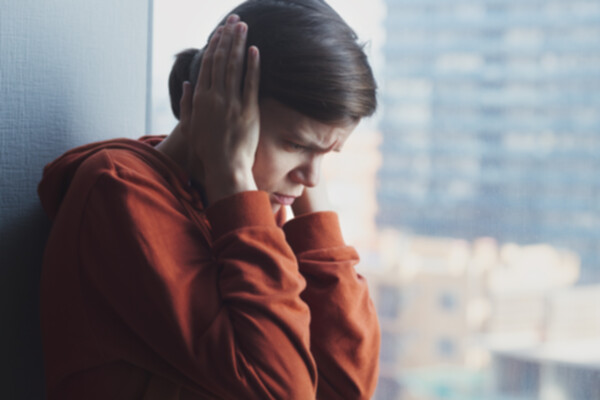Are there differences in autism in women and men? Why is it more difficult to detect autism in girls, adolescents or adult women? Discover autistic traits in women.

He autism in women It tends to present differently than in men, a fact that often leads to misdiagnosis or simply missing the features of this disorder. Because of this, undiagnosed autistic women often judge themselves harshly. Receiving a diagnosis can also help ensure that they receive the right type of support and access available resources.
The ratio of males to autistic women is significantly higher, for this reason most of the studies carried out in people diagnosed with ASD have been carried out with the male population. This has created a lack of knowledge of the differential characteristics of ASD according to sex. The few studies carried out have consisted of small samples, which makes it difficult and even risky to generalize the conclusions.
autism in women
Autism is rarer in women than in men. In fact, research in this regard has indicated that both autistic girls how autistic women are underdiagnosed. The reasons why this happens unlike in men may be the following:
- They internalize anxiety: It is more likely that the autistic girls and women They internalize the anxiety that is related to this disorder, that is, instead of behaving in a more aggressive way, they are more likely to become depressed or antisocial.
- Acceptance of shyness: Due to social and cultural aspects, excessive shyness in girls is seen as more ‘acceptable’ than in a boy.
- Interests: When the girls with autism focus exclusively on a particular interest, they are more likely to choose a more socially ‘acceptable’ fascination such as unicorns or dolls, unlike children.
- The few studies that exist suggest that girls with ASD present greater intellectual disability The scientific community points out that ASD is underdiagnosed in high-functioning girls because they have greater resources to compensate for difficulties. Another reason may be that the diagnostic criteria used only include symptoms of the male gender.
Some explanations for this lower prevalence are:
- Neuroendocrine functions: The high levels of oxytocin that women have would be a protective factor regarding the risk of having ASD. On the contrary, high levels of fetal testosterone may predispose children to develop greater behavior linked to “systematization.”
- Genetic-environmental impact: Girls present more protective factors in the areas of social and care skills.
How are autism symptoms different in women?
The symptoms of autism in women They are not very different from those of men. However, there is data that suggests that autistic women and girls are more likely to camouflage and hide their symptoms.
The girls affected with ASD They present greater communication difficulties than children, but children show greater repetitive behaviors and stereotyped interests. Although both men and autistic women They can camouflage their symptoms, research and studies in this regard have determined that this type of behavior is much more common in women and girls. For this reason, this could explain why they are less likely to be diagnosed as autistic.

Therefore, it is also important to note that the data that analyzes the differences between autism in women and men They are not enough. In this way, experts do not have definitive information about these differences, that is, they do not know if they really exist or are the result of the camouflage to which women tend to be more inclined. The conclusion is that more long-term research is required to draw firm conclusions about autism in women
How do I know if I am an autistic woman?
Any woman who wonders whether or not she has autism may have difficulty finding information about it, since this disorder is more predominant in men. However, there are a series of symptoms that can help you detect autism in women:
- Social difficulties: One of the main reasons why women wonder if they have autism is precisely because they have experienced social difficulties throughout their lives. Normally, the women with autism They often have difficulty ‘reading’ and responding to social cues. Many women end up learning certain strategies for responding to people in socially appropriate ways. In fact, they can often feel socially anxious, as they reflect on their social interactions and may even end up feeling excluded and alone. Although autistic women can interact well in individual situations, they often find it very difficult to be in groups and may feel emotionally and physically exhausted after too much social interaction.
- Sensory sensitivity: He autism in women It also implies experiencing sensory sensitivity differently. In fact, they are more aware of smells, light, sounds and/or touch. In many cases, women with Asperger’s or autism often end up being affected by this sensitivity, something that can end up interfering with some daily actions. For example, they may not go to a shopping center because of the lights, sounds, and crowds.
- Problems in executive function: Many autistic women They experience problems with executive function, that is, those skills that involve working memory, flexible thinking, and self-control. When a person has problems in these areas, they usually have problems completing tasks, organizing, or controlling themselves emotionally.

- Obsessive interests: Both the men and women with autism traits They tend to have intense and specialized interests. In this way, they usually focus on a specific topic and it is possible that they want to know each and every one of the facts about this interest.
- They use camouflage: The autistic women They tend to have a greater desire to ‘fit in’ socially than men with the same condition. So much so that they usually spend a large part of their energy to mask or camouflage their differences to be perceived as ‘normal’.
- Sleeping problems: He autism in women It also implies difficulties sleeping. This is often caused by sensory issues, as they may become bothered by noise at night.
- Difficulties in eye contact: Making eye contact with others can be very challenging for people with autism. So much so that the autistic women, in particular, often force themselves to make eye contact. Over time this may feel like a more natural action for them.
- Problems with emotional regulation: Research has shown that there is a poor connection between the frontal cortex and the amygdala in people with autism. This fact can cause problems with our emotional regulation, which means experiencing difficulties in rationalizing situations and maintaining control. The autistic women They describe this as ‘crises’, that is, extreme emotional reactions in situations that ‘should not’ lead to it.
- Repetitive behaviors: In most cases of autism, there are repetitive behaviors that can be associated with this disorder. For example, among the best known we can find rocking, repeating words, shaking hands, among others. Instead, women, adolescents or autistic girls They may show other types of behaviors that are less visible, such as pacing from side to side, twirling their hair, or rubbing their feet.
- Anxiety and depression: These two disorders are not symptoms of autism. Even so, due to all the difficulties that may arise women with autism It is common to experience mental health problems such as anxiety, depression or addiction problems. Additionally, the suicide rate is higher when autism is in women than in men, and appears to be related to the degree of camouflage they perform.
If you identify with many of these signs, you probably have autism. Even so, it is important that you go to a professional psychologist if you have these problems, whether they are diagnosed as autism or not.
There seems to be a tendency to find more internalized symptoms in adolescents with high-functioning ASD than in boys. In typical development, girls tend to express greater concern about the feelings of others, and seek to integrate into smaller groups that allow for greater proximity and intimacy. In adolescence it is identified because it is a stage in which conversations increasingly focus on personal aspects. In the case of high functioning, adolescent girls are more inclined to express emotions, but have difficulties integrating. ASD girls present fewer repetitive behaviors compared to boys, which may be related to oxytocin and vasopressin levels.
However, currently there are no differences in diagnostic criteria for both sexes. The ASD girls Those with high functioning would form a risk group starting in adolescence due to their vulnerability to developing affective symptoms and internalized pathologies, so it is important to intervene as soon as possible on these aspects.
The question about whether community of girls with ASD They present fewer difficulties and are underdiagnosed, it remains to be answered. It is necessary to carry out important studies that allow us to respond to this community.








